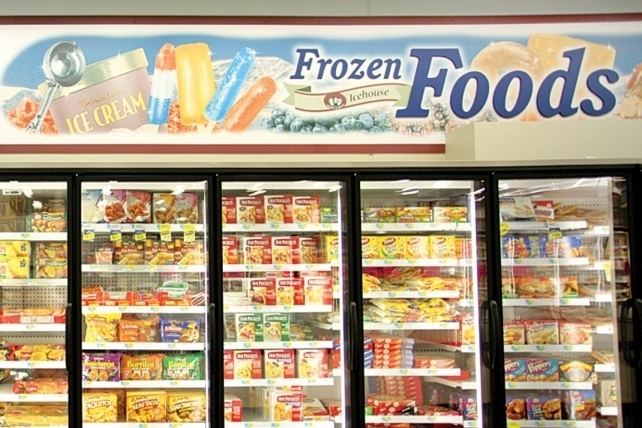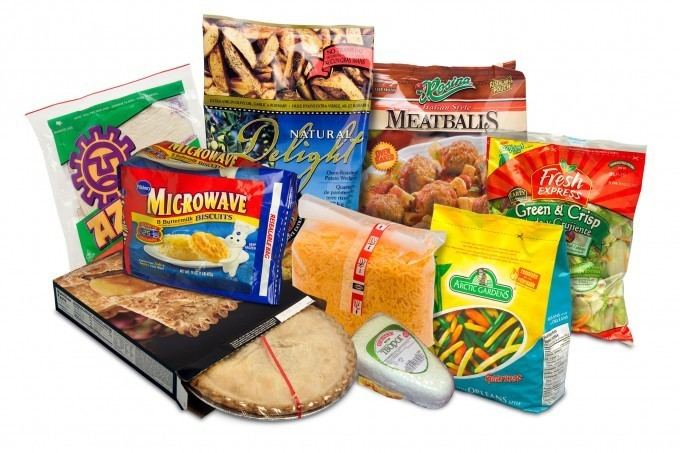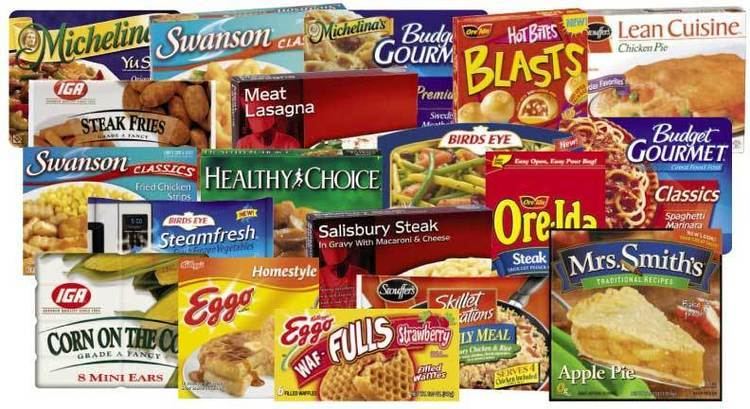 | ||
Similar Canning, Meat, Fish as food, Vegetable, Chicken meat | ||
Fresh vs frozen food
Freezing food preserves it from the time it is prepared to the time it is eaten. Since early times, farmers, fishermen, and trappers have preserved their grains and produce in unheated buildings during the winter season. Freezing food slows down decomposition by turning residual moisture into ice, inhibiting the growth of most bacterial species. In the food commodity industry, there are two processes: mechanical and cryogenic (or flash freezing). The freezing kinetics is important to preserve the food quality and texture. Quicker freezing generates smaller ice crystals and maintains cellular structure. Cryogenic freezing is the quickest freezing technology available due to the ultra low liquid nitrogen temperature −196 °C (−320 °F).
Contents
- Fresh vs frozen food
- 6 chicken crock pot freezer meals
- Preservatives
- History
- Technology
- Packaging
- Vitamin content of frozen foods
- Effectiveness
- Quality
- Reaction
- References

Preserving food in domestic kitchens during the 20th and 21st centuries is achieved using household freezers. Accepted advice to householders was to freeze food on the day of purchase. An initiative by a supermarket group in 2012 (backed by the UK's Waste & Resources Action Programme) promotes advising the freezing of food "as soon as possible up to the product's 'use by' date". The Food Standards Agency was reported as supporting the change, providing the food had been stored correctly up to that time.

6 chicken crock pot freezer meals
Preservatives

Frozen products do not require any added preservatives because microorganisms do not grow when the temperature of the food is below −9.5 °C (15 °F), which is sufficient on its own in preventing food spoilage. Long-term preservation of food may call for food storage at even lower temperatures. Carboxymethylcellulose (CMC), a tasteless and odorless stabilizer, is typically added to frozen food because it does not adulterate the quality of the product.
History
Natural food freezing (using winter frosts) had been in use by tribes in cold climates for centuries. By 1885 a small number of chicken and geese were being shipped from Russia to London in insulated cases using this technique. By March 1899, the "British Refrigeration and Allied Interests" reported that a food importing business, "Baerselman Bros", was shipping some 200,000 frozen geese and chickens per week from three Russian depots to New Star Wharf, Lower Shadwell, London over three or four winter months. This trade in frozen food was enabled by the introduction of Linde cold air freezing plants in three Russian depots and the London warehouse. The Shadwell warehouse stored the frozen goods until they were shipped to markets in London, Birmingham, Liverpool and Manchester. The techniques were later expanded into the meat packing industry.

From 1929, Clarence Birdseye introduced "flash freezing" to the American public. Birdseye first became interested in food freezing during fur-trapping expeditions to Labrador in 1912 and 1916, where he saw the natives use natural freezing to preserve foods. More advanced attempts include food frozen for Eleanor Roosevelt on her trip to Russia. Other experiments, involving orange juice, ice cream and vegetables were conducted by the military near the end of World War II.
Technology

The freezing technique itself, just like the frozen food market, is developing to become faster, more efficient and more cost-effective.
Mechanical freezers were the first to be used in the food industry and are used in the vast majority of freezing / refrigerating lines. They function by circulating a refrigerant, normally ammonia, around the system, which withdraws heat from the food product. This heat is then transferred to a condenser and dissipated into air or water. The refrigerant itself, now a high pressure, hot liquid, is directed into an evaporator. As it passes through an expansion valve, it is cooled and then vaporises into a gaseous state. Now a low pressure, low temperature gas again, it can be reintroduced into the system.
Cryogenic or (flash freezing) of food is a more recent development, but is used by many leading food manufacturers all over the world. Cryogenic equipment uses very low temperature gases – usually liquid nitrogen or solid carbon dioxide – which are applied directly to the food product.
Packaging
Frozen food packaging must maintain its integrity throughout machine filling, sealing, freezing, storage, transportation, thawing, and often cooking. As many frozen foods are cooked in a microwave oven, manufacturers have developed packaging that can go straight from freezer to the microwave.
In 1974, the first differential heating container (DHC) was sold to the public. A DHC is a sleeve of metal designed to allow frozen foods to receive the correct amount of heat. Various sized apertures were positioned around the sleeve. The consumer would put the frozen dinner into the sleeve according to what needed the most heat. This ensured proper cooking.
Today there are multiple options for packaging frozen foods. Boxes, cartons, bags, pouches, Boil-in-Bags, lidded trays and pans, crystallized PET trays, and composite and plastic cans.
Scientists are continually researching new aspects of frozen food packaging. Active packaging offers a host of new technologies that can actively sense and then neutralize the presence of bacteria or other harmful species. Active packaging can extend shelf-life, maintain product safety, and help preserve the food over a longer period of time. Several functions of active packaging are being researched:
Vitamin content of frozen foods
Effectiveness
Freezing is an effective form of food preservation because the pathogens that cause food spoilage are killed or do not grow very rapidly at reduced temperatures. The process is less effective in food preservation than are thermal techniques, such as boiling, because pathogens are more likely to be able to survive cold temperatures rather than hot temperatures. One of the problems surrounding the use of freezing as a method of food preservation is the danger that pathogens deactivated (but not killed) by the process will once again become active when the frozen food thaws.
Foods may be preserved for several months by freezing. Long-term frozen storage requires a constant temperature of −18 °C (0 °F) or less.
Quality
The speed of the freezing has a direct impact on the size and the number of ice crystals formed within a food product's cells and extracellular space. Slow freezing leads to fewer but larger ice crystals while fast freezing leads to smaller but more numerous ice crystals. Large ice crystals can puncture the walls of the cells of the food product which will cause a degradation of the texture of the product as well as the loss of its natural juices during thawing. That is why there will be a qualitative difference observed between food products frozen by ventilated mechanical freezing, non-ventilated mechanical freezing or cryogenic freezing with liquid nitrogen.
Reaction
According to a study, an American consumes on average 71 frozen foods a year, most of which are pre-cooked frozen meals. Many food critics host shows are dedicated to the tasting and reviewing of frozen foods, the web show Freezerburns being one of the more notable ones.
Many Americans prefer to eat frozen foods over canned foods because in frozen foods the nutrients are kept alive. In canned foods the food is heated to the extent that the vitamins and minerals are burned out of them, but the heating is necessary in order to keep the food preserved for a long period of time. One of the nutrients lost in the canning process is papain enzyme, which is essential to digestion. In frozen foods this nutrient is not destroyed making it easier on your body to digest the food it just received.
